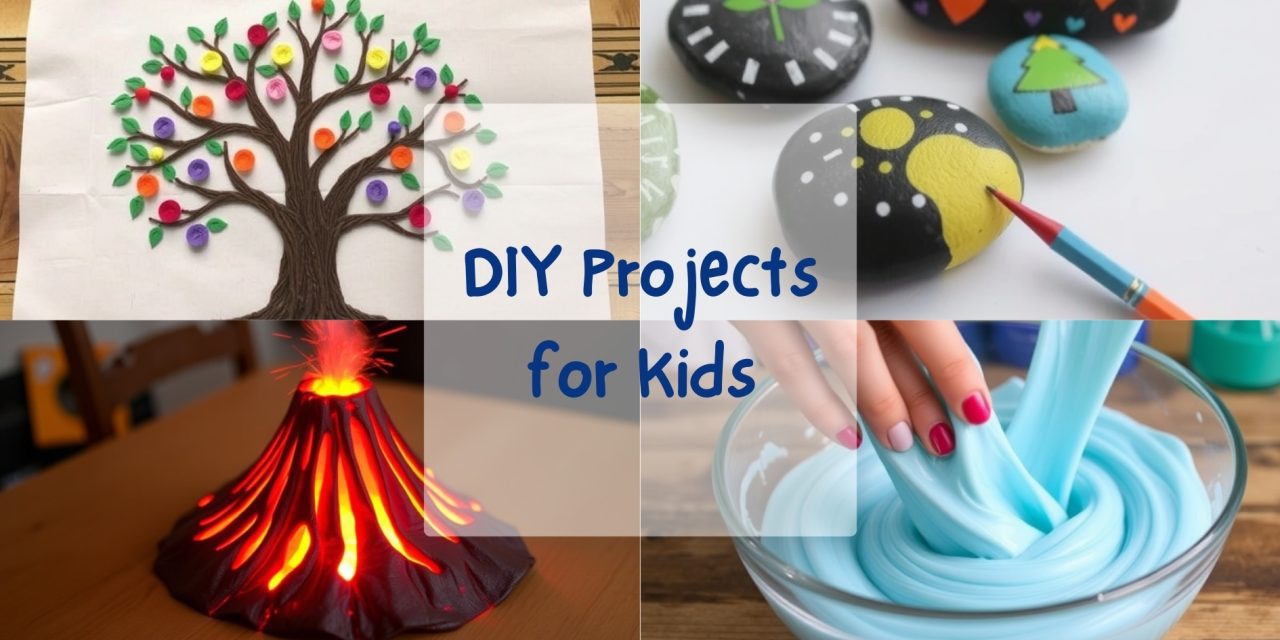Kids have a natural talent for making things extremely messy, but when you channel that energy into a DIY project, you end up with more than just glitter in places you’ll never find. These activities are the perfect opportunity for kids to get their hands dirty (literally) while developing creativity, problem-solving skills, and a sense of accomplishment.
Plus, they’ll learn valuable lessons in patience and teamwork while crafting something they can proudly say, “I made that!” Are you ready to find out why DIY projects are a win for kids and parents? Before diving into the projects, let’s explore why DIY activities are so valuable:
- Encourages Creativity: DIY projects allow kids to think outside the box and develop unique solutions.
- Improves Fine Motor Skills: Cutting, gluing, and assembling materials help develop hand-eye coordination and dexterity.
- Fosters Critical Thinking: Kids learn to plan, troubleshoot, and adapt as they work on projects.
- Boosts Confidence: Completing a project gives children a sense of accomplishment.
- Strengthens Family Bonds: Working together on DIY activities promotes teamwork and quality time.
10 DIY Projects That Combine Fun and Education
1. Create a Mini Garden
Start a mini garden to teach kids about plants, ecosystems, and responsibility. Use small pots or recycled containers, fill them with soil, and plant easy-to-grow seeds like basil, marigolds, or beans. Kids can water the plants daily and watch them grow while learning about photosynthesis and plant life cycles.
2. Build a Volcano
Bring science to life with a DIY volcano. Using a bottle, baking soda, vinegar, and some clay or papier-mâché for the structure, kids can create an eruption. This project introduces basic chemistry concepts like reactions and compounds.
3. Design a Solar Oven
Build a simple solar oven using a cardboard box, aluminum foil, and plastic wrap. Kids can use it to cook s'mores while learning about renewable energy and the sun's power.
4. Craft a Family Tree
Help your children understand family history and relationships by creating a family tree. Use colored paper, markers, and photos to trace your ancestry. This activity also encourages storytelling and cultural exploration.
5. DIY Marble Run
Design a marble run using cardboard tubes, tape, and boxes. Challenge your kids to create a track where the marble can roll smoothly from start to finish. This project teaches basic engineering and physics principles.
6. Make Homemade Slime
Whip up a batch of homemade slime using glue, baking soda, and contact lens solution. Customize it with glitter or food coloring. Kids will learn about viscosity and non-Newtonian fluids while having a blast.
7. Build a Birdhouse
Using wood scraps or recycled materials, build a birdhouse for your backyard. This project teaches kids about animal habitats and provides a practical way to observe wildlife.
8. Create a Weather Station
Introduce meteorology by building a DIY weather station. Use household items to make simple instruments like a rain gauge, wind vane, and thermometer. Track weather patterns and discuss the science behind them.
9. Construct a Time Capsule
Encourage kids to reflect on their current interests, goals, and memories by assembling a time capsule. Include drawings, letters, photos, and small objects. Bury or store it to open in the future, sparking discussions about history and the passage of time.
10. Paint and Decorate Rocks
Collect rocks from your yard or local park, then paint and decorate them with fun designs or positive messages. This project encourages creativity and can be part of a community project if you hide the rocks for others to find.
Tips for Making DIY Projects Enjoyable and Stress-Free
- Choose Age-Appropriate Projects: Match the difficulty level of the activity to your child’s age and abilities.
- Encourage Participation: Let kids take the lead wherever possible, even if it means a little mess.
- Keep Supplies Handy: Stock up on basic craft supplies like glue, scissors, markers, and recycled materials to make spontaneous projects easier.
- Be Patient: Focus on the process rather than perfection. Mistakes are part of the learning experience.
- Celebrate Success: Praise your child’s effort and creativity, regardless of outcome.
Why Learning Through Play Matters
DIY projects provide a platform for experiential learning, where kids gain knowledge by doing. These activities combine fun with valuable life skills, nurturing well-rounded, curious individuals. Plus, the time spent together strengthens family bonds and creates lasting memories. Dive into one of these projects today and watch your child’s imagination and skills flourish!
Ready to get the glue out and spark your child’s creativity? Visit Marvelus Kids for more DIY project ideas that will turn your home into a crafting paradise!









